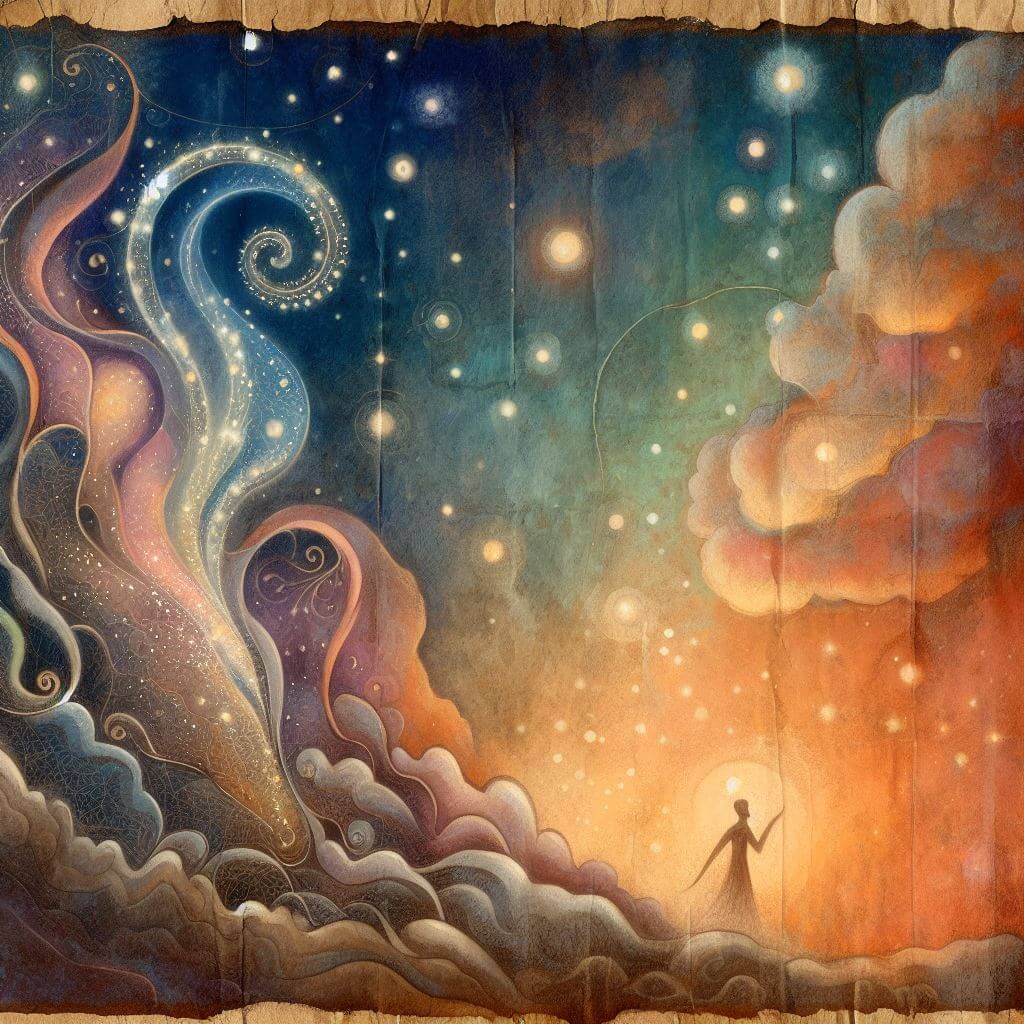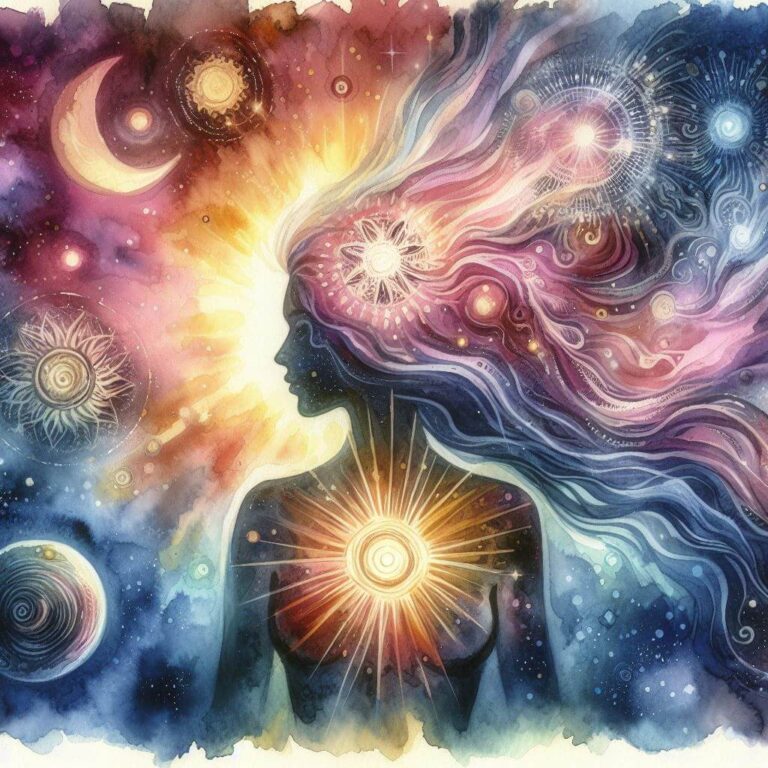
The unicursal hexagram is a fascinating symbol that may seem complex at first glance but is actually quite simple and engaging once you get the hang of it. This enigmatic symbol, often associated with mystical and arcane philosophies, has a history as intriguing as its design.
The term “unicursal hexagram” might sound like something straight out of a fantasy novel, but it’s quite real. “unicursal” means “traversable in one path”, and “hexagram” refers to a six-pointed geometric star figure. Together, the unicursal hexagram is a six-pointed star that can be drawn in a single, unbroken line.
Unveiling the Origins of the Unicursal Hexagram
The symbol can trace its roots back to ancient times, and it carries a wealth of symbolism and meaning. It is often linked to the Hermetic Order of the Golden Dawn, a secret society from the late 19th and early 20th centuries that delved into matters of the metaphysical and the occult. It also has connections with renowned occultist Aleister Crowley and his philosophy of Thelema.
Despite these associations, the unicursal hexagram is not solely bound to the realm of the occult. It is a symbol that transcends boundaries, appearing in various cultures and disciplines, including mathematics, art, and even popular culture.
In Mathematics and Art
In mathematics, the unicursal hexagram is a marvel of geometric design. It’s a testament to the beauty that can emerge from simple lines and angles. This six-pointed star figure, created by interlacing two equilateral triangles, can be drawn without lifting your pen off the paper or retracing any lines, hence the term “unicursal”.
In the realm of art, the unicursal hexagram holds a special place. Its perfect symmetry and balance make it a favorite among artists and designers. It’s not uncommon to see this symbol gracing album covers, logos, and even tattoos.
Whether you’re exploring the unicursal hexagram for its mathematical intrigue, artistic allure, or historical and philosophical underpinnings, there’s no denying the power and allure of this unique symbol. Its labyrinthine lines and intricate design draw you in, inviting you to discover the mysteries that lie within its form.
The Mystical Dimension
The unicursal hexagram is not just a geometric pattern or an artistic design; it’s a portal into a world of mysticism and esoteric wisdom. The symbol’s six points are often interpreted as a representation of the union of opposites – a core concept in many spiritual and philosophical teachings. The interlaced triangles, one pointing upwards and the other downwards, symbolize the harmony between opposing forces like fire and water, heaven and earth, male and female.

Unicursal Hexagram and Thelema
In the world of Thelema, a spiritual philosophy developed by Aleister Crowley, the unicursal hexagram holds a significant place. Crowley, a controversial figure of his time, was deeply fascinated by the symbol and even created his own version of it. He incorporated a five-petaled rose in the center, symbolizing the individual’s divine nature and the potential for self-realization.
In Modern Culture
Despite its ancient roots and mystical connotations, the unicursal hexagram has found its way into modern culture. It’s a favorite among graphic designers and tattoo artists for its aesthetic appeal and the sense of mystery it imparts. The symbol has also made appearances in various forms of media, including music, movies, and video games, introducing a new generation to its enigmatic charm.
Exploring the Unicursal Hexagram
If you’re intrigued by the unicursal hexagram, there are many ways to delve deeper into its mysteries. You can study its geometric properties, explore its historical usage, or meditate on its symbolic meanings. As you journey through the labyrinth of its lines, you might just discover something about the universe, or perhaps, about yourself.
Remember, this is more than just a symbol; it’s a journey, an adventure, a doorway to exploration. So, whether you’re a novice, just beginning your exploration, or a seasoned traveler in the world of symbols, the unicursal hexagram has something to offer you. Its captivating design and rich symbolism continue to fascinate and inspire, bridging the gap between the ancient and the modern, the tangible and the mystical.
Significance in Tarot
Another interesting aspect of the unicursal hexagram is its association with Tarot, particularly within the Thoth Tarot deck designed by Aleister Crowley and Lady Frieda Harris. In this context, the unicursal hexagram takes on additional layers of symbolic meaning. Each point of the hexagram is associated with a specific element – Fire, Water, Air, Earth, Spirit Above, and Spirit Below – representing the interconnectedness of all things in the universe.
Unicursal Hexagram and Sacred Geometry
Sacred geometry, the study of geometric forms and their metaphorical relationships to human evolution as well as sacred architecture and natural phenomena, also recognizes the unicursal hexagram. As a symbol, it epitomizes the sacred marriage of the spiritual and the physical, the microcosm and the macrocosm, and the harmonious balance of opposites. Its perfect symmetry reflects the inherent balance present in the universe.
As a Personal Symbol
Many people adopt the unicursal hexagram as a personal symbol, wearing it as jewelry or getting it tattooed on their body. For them, it serves as a constant reminder of the unity of opposites and the interconnectedness of all things. It embodies personal growth, spiritual enlightenment, and the continual quest for understanding.
A Symbol of Insight and Inspiration
The unicursal hexagram, with its rich history, profound symbolism, and aesthetic appeal, is indeed a symbol that captivates. It invites us to explore, to question, and to seek understanding. It bridges the gap between the ancient and the modern, the scientific and the spiritual, the tangible and the abstract.
As you delve deeper into the mysteries of the unicursal hexagram, you may find that it is more than just a symbol. It is a guide, a teacher, and a source of inspiration. It challenges us to look beyond the surface, to seek balance in opposition, and to appreciate the beauty and complexity of the universe. Whether you’re a student of mathematics, a lover of art, a spiritual seeker, or simply someone intrigued by symbols, the unicursal hexagram has a wealth of insights to offer.



